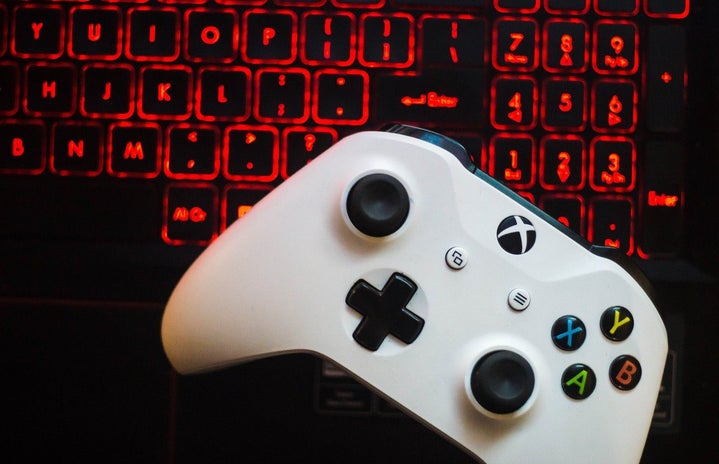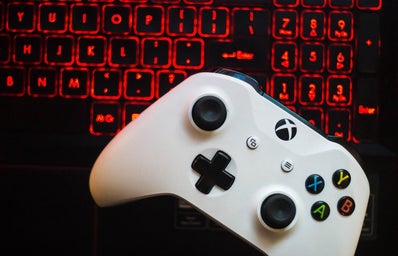Growing up female, you might have been told that playing video games “isn’t ladylike” or that you would be much better off playing games like “The Sims” or “Animal Crossing” rather than a first-person shooter game like “Call of Duty” or “Counter Strike: Global Offense,” or maybe you did play those first-person shooter games but you were scared away by the level of toxicity and hatred that was spewed towards any breathing woman in the lobby. Whether you’ve experienced none of these things, one of them or all of the above, you can understand there is a gender divide within the general realm of gaming, with women making up 30% of gamers compared to men’s 61%
Now, what is esports and what does it have to do with any of this? Esports, short for electronic sports, simply refers to professional gaming. Esports can be dated as far back as 1972, where the winner of a gaming competition won a yearlong subscription to Rolling Stone, compared to now when the best of the best compete for multi-million dollar prize pools.
While esports is an ever growing industry, raking in hundreds of millions of dollars a year, it has been severely lacking in one area: female representation. While women still occupy space within esports, it’s only a fraction compared to the amount of space that men take up. The BBC reported that there are no women in the top 300 earners and only a very small portion of global prize money is going to women. So, why is this?
First and foremost, there is a large misconception that men are simply better than women at video games. However, any study will tell you that there is actually zero difference between the skill levels of men and women. This stereotype can still negatively affect how women play through stereotype threat. Professor Rabindra Ratan from Michigan State University says, “There is an effect called stereotype threat, which says that when you know about a stereotype that applies to you, it affects your behavior. If women know about the stereotype that they do not play well, then this might actually reduce the likelihood that they play well.”
Furthermore, it won’t matter whether you’ve reached the highest rank possible in a game. People will still doubt you, discriminate against you and make assumptions about you based on your gender. For example, this clip from a collegiate match where one of the teams ridicules the only female member on a team, saying that they can obviously tell she’s the worst member of the team because she’s a woman.
This level of harassment is constant for women in any competitive game. It’s something you can’t escape no matter how hard you try, and it can be discouraging when you have to worry about whether it’s a good idea to speak in voice chat or not when you just want to have fun playing your favorite game.
While the esports community still grapples with a large gender divide, all women’s esports is currently the healthiest it’s ever been. In the past, women’s esports might have taken the backseat due to low resources and viewership, but things have changed. Many esports organizations are beginning to invest in all-women rosters and tournaments like Valorant’s Game Changers have exploded in popularity.
In the midst of the pandemic, Riot Games launched “Valorant,” a five versus five player tactical shooter game. From its very inception, “Valorant” was an inclusive game, featuring a wide array of characters of different genders and ethnicities. It’s no wonder that “Valorant” has a relatively high percentage of female players compared to most first-person shooter games. Only a year after “Valorant”’s launch, Game Changers was announced. This is a tournament exclusively for women and marginalized genders and would enable them to be seen and soon signed to top esports organizations. The fact that “Valorant” was funneling enough resources to almost rival Valorant Champions Tour, its main tier 1 tournament, was unheard of. While tier 1 tournaments for any game get large prize pools, lots of exposure, and resources, tiers below don’t get anywhere near as much. The first ever Game Changers grand finals in 2022 raked in an estimated 240,000 viewers, and when a 2023 roster was announced featuring Kyedae, QuarterJade and Sydeon, some of the top Valorant streamers, their qualifier match championed an estimated 100,000 viewers, which is unheard of even for a VCT qualifier match.
Following in its path is “Overwatch”’s Calling All Heroes tournament. Announced in 2022, Calling All Heroes aims to serve the same purpose as Game Changers: to showcase underrepresented genders within the “Overwatch” esports ecosystem. While it doesn’t necessarily have the same resources that Game Changers does (prize pool of $25,000 compared to $500,000), it deserves the same recognition nonetheless. In the past, the Overwatch League, the tier one league, has only had two female players across its six year time span. While the Overwatch League has been discontinued, it’s currently been reformed into the Overwatch Challenger Series, which could prove as an easier way for women and marginalized genders to be integrated into the pro scene, since all Overwatch League teams were franchised in the past, while now, anyone can build a team and compete.
Still, this leaves a question unanswered: How can we meaningfully integrate women into the primary circuit so that women-only leagues are no longer needed? By themselves, leagues like Game Changers or Calling all Heroes cannot be permanent solutions for the gender gap. It’s going to take time to create a space that is more inclusive for women at the highest level, but I believe that we have to start at the source, so women feel more welcome to pick up gaming in the first place.


